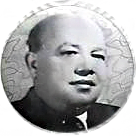





Maher E. SALEH, Ahmed A. EL-REFAEY and Amal H. MAHMOUD ( 2016). Effectiveness of Sunflower Seed Husk Biochar for Removing Copper Ions from Wastewater: a Comparative StudySoil & Water Res., 11, 2016 (1): 53–63
Abstract: Copper represents one of major hazardous pollutants in wastewater. The aim of this study is the comparison be¬tween sunflower seed husk biochar (SSHB) and activated carbon (AC) and sunflower seed husk feedstock (SSHF) in their efficiency of Cu2+ removing from aqueous solutions. The removed Cu2+ was monitored for various intervals extended to 96 h at 298, 303, and 308 K in batch experiments. Adsorption reactions showed that SSHB was superior in Cu2+ removal process at all tested temperatures in comparison with AC and SSHF. Results of surface properties and Fourier transform infrared spectroscopy confirmed the higher surface reactivity of SSHB than AC and SSHF. Both SSHF and AC were affected by time and temperature of reaction in their removal efficiency for Cu2+ while SSHB was not affected by these parameters. A deformation observable under a scanning electron microscope and a higher release of dissolved organic carbon from SSHF after the reaction with Cu2+ and vice versa in SSHB sug¬gested the electrostatic ion exchange and complex reactions mechanisms for Cu2+ removal by SSHF in addition to the physical sorption controlled by surface area and porosity of SSHB. The adsorption kinetics of Cu2+ was fitted to pseudo second order equation and obtained results indicate that SSHB is a recalcitrant and a strong biosorbent. Therefore, SSHB can be introduced as a cost-effective and efficient biosorbent for copper removal from wastewaters
Keywords: (adsorption kinetics; biosorbents; charcoal; heavy metals; sunflower biochar; water treatment)